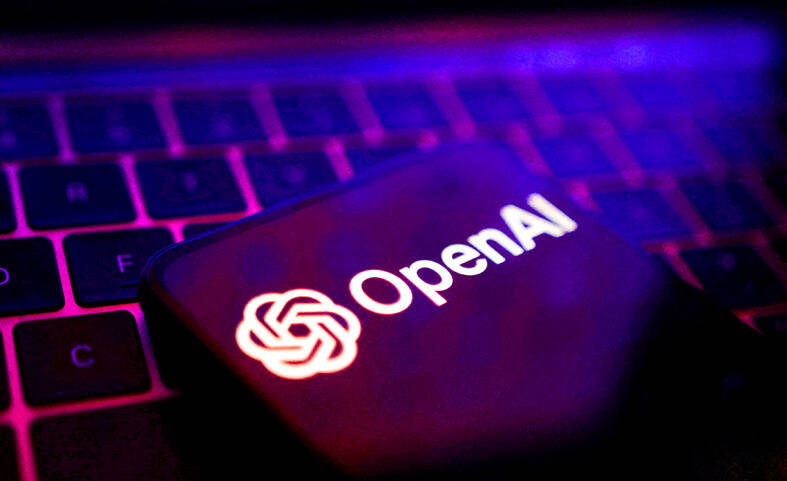OpenAI on Thursday said it was putting its artificial intelligence (AI) engine to work in a challenge to Google’s market-dominating search engine.
The start-up behind ChatGPT announced that it is testing a “SearchGPT” prototype that is “designed to combine the strength of our AI models with information from the Web” to answer online queries quickly and to provide relevant sources.
SearchGPT is being made available to a small group of users and publishers to get feedback, OpenAI said in a blog post.

Photo: Reuters
Search features refined in the prototype would be woven into ChatGPT in the future, the San Francisco-based company said.
Users would be able to interact with SearchGPT through conversational queries, and can ask follow-up questions as they might if speaking to a person, OpenAI said.
Google recently added AI-generated query result summaries — referred to as “Overviews” — to its search engine, causing worries among some that the move would result in fewer opportunities to serve up money-making ads.
The new feature offers written text at the top of results for Google searches, ahead of the traditional links to sites, which summarizes information that the engine believes answers the user’s search query.
OpenAI’s description of SearchGPT sounded similar to Google’s Overviews.
OpenAI said it was working with some publishers to refine SearchGPT, which is being kept separate from the training of its generative AI foundation models.
“AI search is going to become one of the key ways that people navigate the Internet, and it’s crucial, in these early days, that the technology is built in a way that values, respects, and protects journalism and publishers,” The Atlantic chief executive Nicholas Thompson said in the OpenAI blog post. “We look forward to partnering with OpenAI in the process.”
OpenAI has invited users to sign up on a wait list to try SearchGPT.

Intel Corp chief executive officer Lip-Bu Tan (陳立武) is expected to meet with Taiwanese suppliers next month in conjunction with the opening of the Computex Taipei trade show, supply chain sources said on Monday. The visit, the first for Tan to Taiwan since assuming his new post last month, would be aimed at enhancing Intel’s ties with suppliers in Taiwan as he attempts to help turn around the struggling US chipmaker, the sources said. Tan is to hold a banquet to celebrate Intel’s 40-year presence in Taiwan before Computex opens on May 20 and invite dozens of Taiwanese suppliers to exchange views

Application-specific integrated circuit designer Faraday Technology Corp (智原) yesterday said that although revenue this quarter would decline 30 percent from last quarter, it retained its full-year forecast of revenue growth of 100 percent. The company attributed the quarterly drop to a slowdown in customers’ production of chips using Faraday’s advanced packaging technology. The company is still confident about its revenue growth this year, given its strong “design-win” — or the projects it won to help customers design their chips, Faraday president Steve Wang (王國雍) told an online earnings conference. “The design-win this year is better than we expected. We believe we will win

Chizuko Kimura has become the first female sushi chef in the world to win a Michelin star, fulfilling a promise she made to her dying husband to continue his legacy. The 54-year-old Japanese chef regained the Michelin star her late husband, Shunei Kimura, won three years ago for their Sushi Shunei restaurant in Paris. For Shunei Kimura, the star was a dream come true. However, the joy was short-lived. He died from cancer just three months later in June 2022. He was 65. The following year, the restaurant in the heart of Montmartre lost its star rating. Chizuko Kimura insisted that the new star is still down

While China’s leaders use their economic and political might to fight US President Donald Trump’s trade war “to the end,” its army of social media soldiers are embarking on a more humorous campaign online. Trump’s tariff blitz has seen Washington and Beijing impose eye-watering duties on imports from the other, fanning a standoff between the economic superpowers that has sparked global recession fears and sent markets into a tailspin. Trump says his policy is a response to years of being “ripped off” by other countries and aims to bring manufacturing to the US, forcing companies to employ US workers. However, China’s online warriors